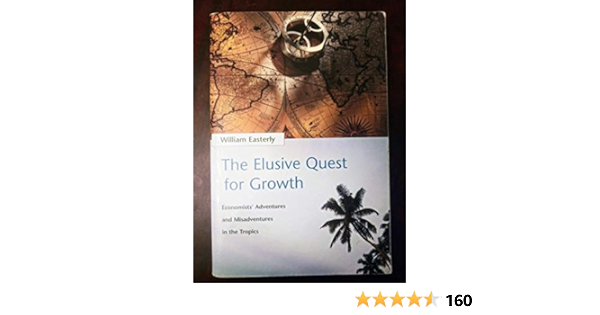The human ambition to defy mortality is as old as civilization itself. From ancient myths of eternal youth to modern scientific endeavors, the dream of significantly extending our lifespan remains a captivating, albeit challenging, pursuit. Recently, this aspiration made headlines when prominent world leaders, including President Vladimir Putin of Russia and President Xi Jinping of China, reportedly discussed the intriguing possibility of extending human life to 150 years through organ transplantation. While such high-level discussions might spark public imagination, the scientific community offers a more grounded perspective on the biological realities.
The Triumph and Limitations of Organ Transplants
Organ transplantation stands as one of medicine`s most remarkable achievements. Kidneys, hearts, livers, and lungs are regularly swapped, offering recipients a second chance at life and, often, decades of extended activity. These operations are a testament to human ingenuity, transforming what were once fatal conditions into manageable chronic illnesses. Modern immunosuppressive drugs have dramatically improved success rates, allowing transplanted organs to function effectively for significant periods, provided the recipient adheres to a rigorous medical regimen.
However, the narrative isn`t quite so straightforward when it comes to extreme life extension. While a new organ can replace a failing one, the process itself is far from benign. Transplant surgeries are inherently invasive and taxing on the body, particularly for older or already frail patients. Furthermore, the lifelong necessity of immunosuppressants, while vital for preventing rejection, leaves the body vulnerable to infections, certain cancers, and other complications. In essence, replacing one worn-out part doesn`t halt the overall aging process; it merely addresses a critical failure point, introducing new challenges in its wake.
Beyond the Surgical Fix: The Systemic Nature of Aging
The idea of simply swapping out every failing organ until we reach 150 years (or beyond) quickly runs into a fundamental biological wall: aging is a systemic process, not just a series of organ failures. As Professor Neil Mabbott from the University of Edinburgh aptly notes, even if we could hypothetically replace every single organ, the theoretical limit of human life remains stubbornly in the vicinity of 120-125 years. This isn`t due to a lack of surgical skill or technological sophistication, but rather the intrinsic, multi-faceted decline of the entire organism.
“Even if organs can be replaced, the aging body becomes progressively worse at coping with infections, trauma, and stress,” explains Professor Mabbott.
Consider the myriad ways our bodies age: the immune system weakens, cells accumulate damage and lose their ability to repair, tissues lose elasticity, bones become brittle, and cognitive functions may decline. These are not issues that can be resolved by simply replacing a single heart or liver. It`s the entire biological infrastructure that gradually degrades, diminishing the body`s overall resilience and capacity to maintain homeostasis. It`s akin to trying to make an antique car run forever by constantly replacing individual components, while the chassis itself slowly rusts away.
The Horizon of Regenerative Medicine: Promise and Practicality
The scientific community is keenly aware of these limitations and is actively exploring more holistic approaches. The frontiers of regenerative medicine and biotechnology offer glimpses of a future where organ failure might be addressed more elegantly than traditional transplantation:
- Xenotransplantation: The idea of using genetically modified animal organs (like those from pigs) to bridge the donor shortage is gaining traction. Early human trials have shown some promise, but patients have not lived for extended periods, highlighting the immense immunological and physiological hurdles yet to be overcome.
- Lab-Grown Organs: Cultivating organs from a patient`s own stem cells in a laboratory environment could eliminate rejection issues. While rudimentary tissues and even some simpler organs have been successfully grown, producing fully functional, complex organs ready for transplantation remains a monumental task.
These innovations are undeniably exciting and hold tremendous potential for treating severe diseases and significantly improving the quality of life for millions. They represent critical steps towards extending healthy, active longevity, allowing more people to live robustly into their 80s, 90s, and perhaps even beyond the century mark. However, the leap from these advancements to a 150-year universal lifespan or, dare we say, immortality, is a chasm that current science simply cannot bridge.
The Realistic Path to a Longer, Healthier Life
While the prospect of pushing human lifespan to 150 years remains firmly in the realm of science fiction, at least for now, science *does* offer tangible, evidence-based strategies for living longer and, crucially, living healthier. Experts consistently point to lifestyle choices as powerful determinants of active longevity. Regular physical activity, stress management, and, perhaps most notably, a balanced diet rich in specific compounds can significantly reduce the risk of chronic diseases and promote overall well-being.
For instance, studies have highlighted the benefits of a diet rich in tea, berries, apples, and dark chocolate. These foods, packed with antioxidants and anti-inflammatory compounds, are associated with a reduced risk of cardiovascular diseases, diabetes, and certain lung conditions. It seems that while we might not be able to trick our biology into reaching a century and a half, we can certainly give it a fighting chance to thrive for as long as possible within its natural design.
Conclusion: A Human Endeavor, Grounded in Reality
The conversation between world leaders about extending life to 150 years serves as a poignant reminder of humanity`s enduring quest for more time. It underscores our innate desire to push boundaries, even those set by our own biology. Yet, the consensus among scientists remains clear: while organ transplantation and emerging biotechnologies are revolutionizing our ability to combat disease and extend active life, they do not offer a shortcut to defying the fundamental limits of aging. The theoretical ceiling of human lifespan, for now, remains steadfast.
Perhaps the true genius lies not in an endless pursuit of an unreachable numerical age, but in optimizing the quality and health of the years we are given. As we continue to unravel the mysteries of aging, the focus remains on ensuring that our extended lives are lived with vitality, rather than merely existing in extended fragility. The dream of 150 might be captivating, but the reality of a healthier, more active 100 is a far more achievable and equally noble goal.







